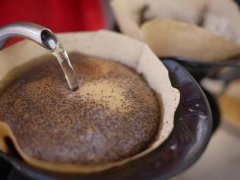How to decrypt the name of individual coffee? How to taste the individual coffee?

For professional baristas, please follow the coffee workshop (Wechat official account cafe_style)
We all know that wine labels usually contain a long list of words, including the country of origin, type, classification, winery and producer name, so that drinkers can have a certain understanding of the flavor of this wine just from the information on the label. In the coffee world, due to the third wave of boutique coffee, that is, we begin to pay attention to coffee fruit, the upstream source of crops. From which continent (Africa? Asia? Central America? South America), which country, the variety of coffee chosen, the microclimate of the place of production, or the well-known manor (or processing plant), etc., establish a production experience-like data, so that coffee drinkers can not only appreciate the taste of different coffee, but also know where the cup of coffee comes from, thus bringing the end consumers and the upstream producers closer.
Like wine, single coffee (Single Origin, that is, beans from a single farmer or cooperative, a single variety of coffee, a single batch of coffee). The definition of "individual coffee" is also different in foreign countries. If you are interested and have time, you can go to the coffeegeek of the United States to learn about it. Today, I would like to explain to you how to look at the name of individual coffee.
In fact, the name of individual coffee is from large to small, that is, from the largest information (producing country) to the region, and then to a single manor or cooperative. Finally, it is the variety, grading and treatment of coffee grown in the manor or cooperative. Let's take it apart a little bit to explain:
State-> producing area (or directly marking the name of the or cooperative or manor of the processing plant)-> coffee bean variety or graded or treatment method
Country: coffee from all over the world mainly comes from Africa, Asia, Central and South America, where different countries have different flavors due to different factors such as climate, soil and so on. The most common comparisons are bright sour African beans and rich-tasting Asian beans.
Producing area: immediately after the name of the country is the mark of the producing area. There may be great differences in the flavor of coffee beans in different producing areas and years. Take Ethiopia-EthiopiaYirgacheffe as an example. Ethiopia's Ethiopia is the name of the coffee-producing country; Yirgacheffe is a high-altitude, narrow, small-growing area in Ethiopia's Sidamo district. Sometimes the name of the cooperative / processing plant may be directly marked after the name of the country, because small farmers in many countries may have only 1 hectare or less of land. therefore, after harvest, it will be centrally handed over to the cooperative / processing plant for treatment (some cooperatives have their own processing equipment, while others will work with independent processing plants to deal with the harvested coffee fruit). On the other hand, the name of the cooperative / processing plant will be directly hung on the name of the individual coffee. As can be seen from the name above, if it is directly the name of the manor (such as the Emerald Manor of Panama, etc.), it is because of the amount of harvested or well-known enough that they sell directly under their own manor name as a brand (friends who are interested in the global auction or online bidding of coffee beans from a single coffee farm can refer to Mr. Guan Jianzhong's article.
The next article will introduce the variety, grading and treatment of coffee beans in the name of individual coffee, and give some examples so that you can know more about it.
Important Notice :
前街咖啡 FrontStreet Coffee has moved to new addredd:
FrontStreet Coffee Address: 315,Donghua East Road,GuangZhou
Tel:020 38364473
- Prev

What's the difference between individual coffee and espresso? What's the difference between single-serving coffee and hand-brewed coffee?
Professional barista communication please follow the coffee workshop (Wechat official account cafe_style) if you go to the coffee bean roaster to find coffee, you won't find any mocha or latte, because it's seasoned, post-processed coffee, and what you can find in the coffee baking factory is some so-called single coffee and espresso coffee, mostly named after origin or production farm, mainly for drinking.
- Next

How would you like your coffee? How to taste the different flavor and taste of hand-made coffee?
Professional baristas Please follow the Coffee Workshop (official Wechat account cafe_style) with the rise of the third wave of boutique coffee culture in recent years, more and more people are fond of individual coffee. The so-called single product coffee refers to the coffee beans processed from the coffee fruit from a single producing area, not by excessive baking, but by a shallow baking method, showing the original taste of coffee.
Related
- Detailed explanation of Jadeite planting Land in Panamanian Jadeite Manor introduction to the grading system of Jadeite competitive bidding, Red bid, Green bid and Rose Summer
- Story of Coffee planting in Brenka region of Costa Rica Stonehenge Manor anaerobic heavy honey treatment of flavor mouth
- What's on the barrel of Blue Mountain Coffee beans?
- Can American coffee also pull flowers? How to use hot American style to pull out a good-looking pattern?
- Can you make a cold extract with coffee beans? What is the right proportion for cold-extracted coffee formula?
- Indonesian PWN Gold Mandrine Coffee Origin Features Flavor How to Chong? Mandolin coffee is American.
- A brief introduction to the flavor characteristics of Brazilian yellow bourbon coffee beans
- What is the effect of different water quality on the flavor of cold-extracted coffee? What kind of water is best for brewing coffee?
- Why do you think of Rose Summer whenever you mention Panamanian coffee?
- Introduction to the characteristics of authentic blue mountain coffee bean producing areas? What is the CIB Coffee Authority in Jamaica?

